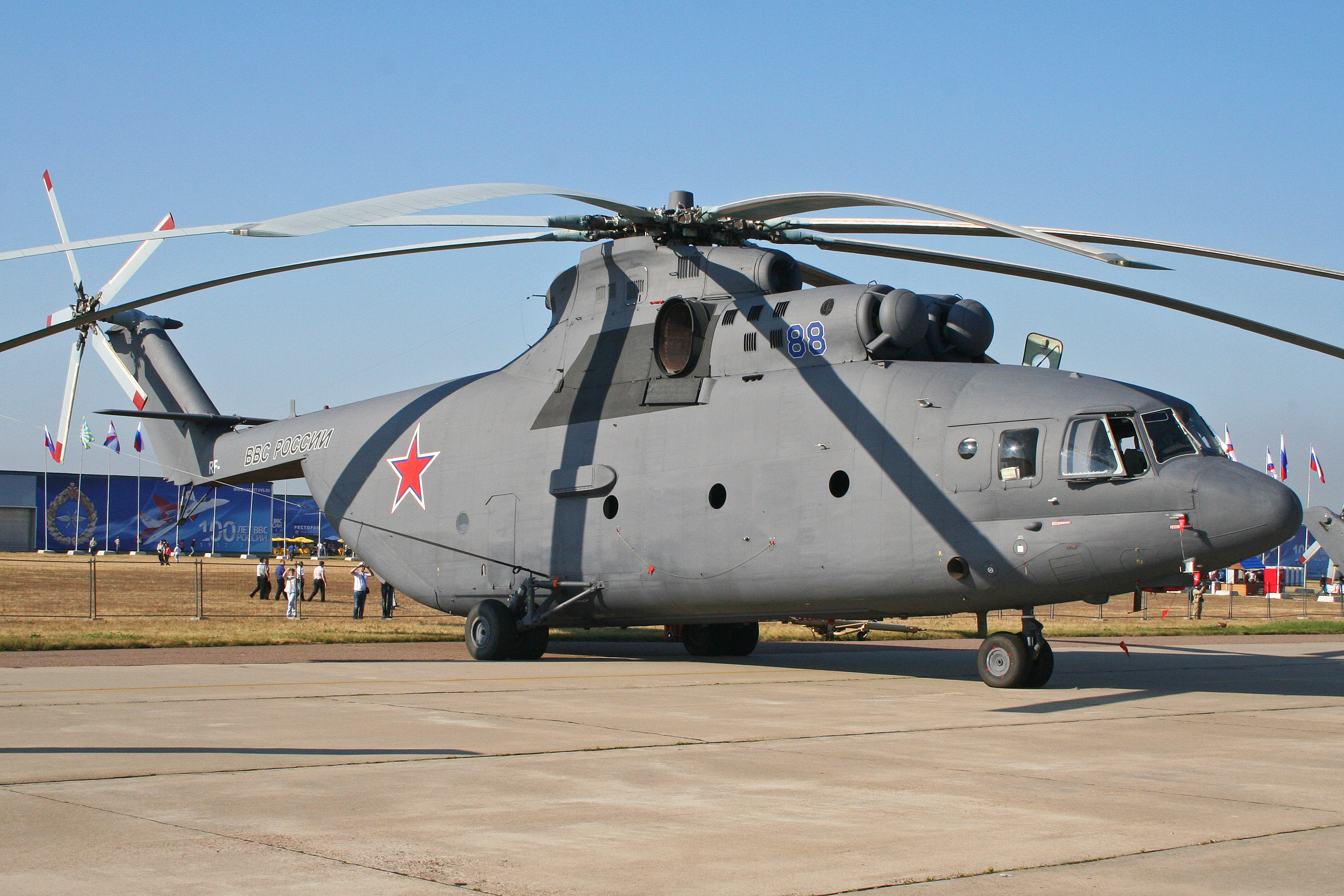The Mil Mi-26 Halo has the load-carrying capability of a domestic C-130 transport plane

Before the 1970s, the Soviet Union was largely dependent on MI-6. Due to the increasing demands of both the Soviet Armed Forces and the Soviet National economy, the MI-26 was developed. The first flight was made on December 14, 1977, and officially entered service in 1983. According to the requirements, the new helicopter was supposed to transport cargo weighing up to 20 t over a distance of more than 500 km, and also to perform military and civilian tasks without any problems at altitudes more than 1000 meters above sea level.
The Mi-26 is approximately 40 meters long, 8.2 meters height, has an empty weight of 28.2 tonnes, and a maximum takeoff weight of 56 tonnes. The Main rotor diameter is 32 m, has an advanced design and construction and is paired to a five-bladed tail rotor fitted along the vertical tail fin facing starboard.

The crew consists of five people: 2 pilots, 1 navigator, 1 flight engineer, and 1 flight technician. The pilots sit in a glass cockpit behind a short, round nose, with great visibility. Right behind the cockpit is a spacious cargo compartment. Loading and unloading are supported by a ramp at the rear, as well as through the side sliding door. The undercarriage is fixed and wheeled, consisting of a traditional tricycle arrangement.
Powering the Mi-26 are two ZMKB Progress D-136 turboshaft engines, with 11,400 hp each. The M-26 can reach a top speed of 295 km/h, cruise speed of 255 km/h, a range of 500 km, and service ceiling of 4,600 m.
![Mil Mi-26 Halo [uncoded] | This massive Mi-26 Halo has never… | Flickr](https://live.staticflickr.com/2866/9849464916_4b3f409ee7_b.jpg)
The Halo has the load-carrying capability of a domestic C-130 transport plane. Its cargo area, with the rear ramp closed, is 12 m long, and 3.2 m wide, with a minimum ceiling height of 2.9 m. This cargo area can hold two combat vehicles weighting 10 tons each. The interior can be configured to seat 80 combat-equipped troops or 60 stretchers. However there were cases when this helicopter was flying overloaded with 150 troops.
In addition to the military versions, the Mi-26 was developed for the civilian market. The civilian version, designated Mi-26T, was put into mass production on January 12, 1985. The helicopter was equipped with an external suspension system that was able to transport standard sea containers without the participation of scaffold gear.





